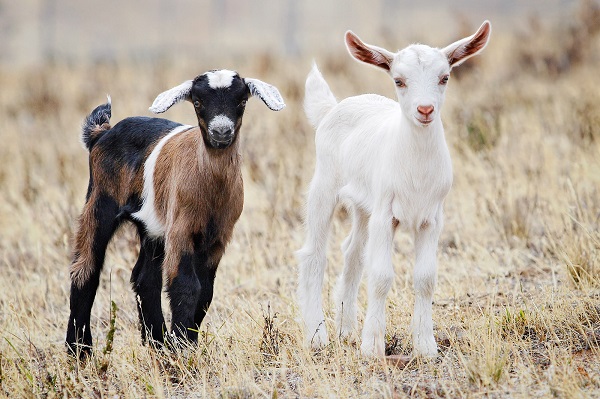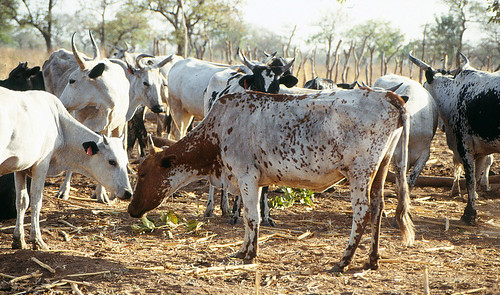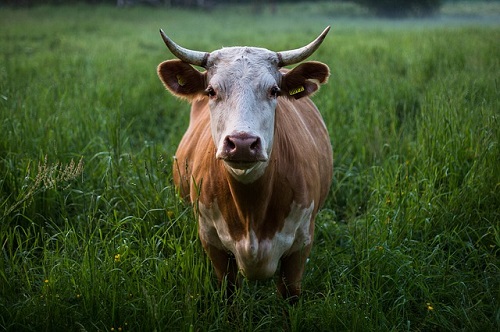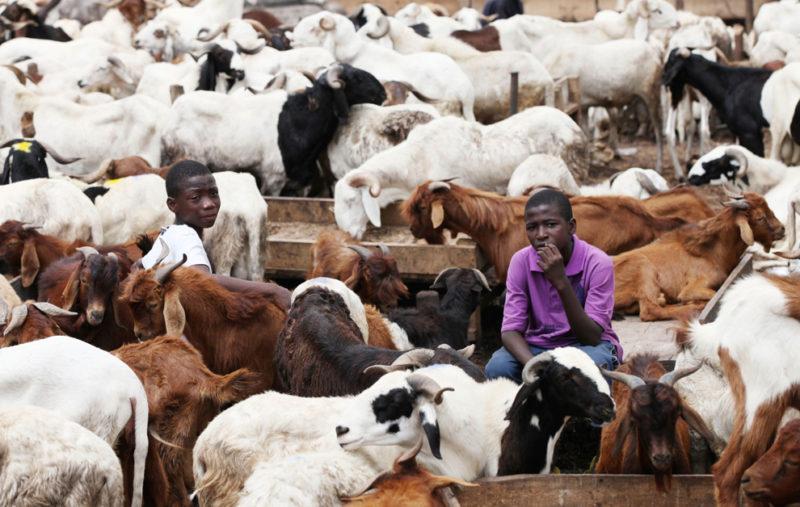The fainting goat breed is known by several different names. It has common names like myotonic goat, wooden-leg, stiff-leg and limber-legged goat. A myotonic goat usually is a medium size goat which has a muscle condition called myotonia. This condition causes their muscles to “lock up” or stiffen when startled. The condition is painless and the animal remains fully conscious while in a myotonic state. One of the most often asked questions is “Does this condition affect their overall life span?”. The answer is NO; a Myotonic goat has a life span equal to that of any other breed of goat and with proper care can live 12-15 years or more. The most noticeable result of this condition is their increased muscle mass. The condition only affects their external muscles and thus has no effect on their internal organs. It is inherited as a subdominant and recessive trait of varying degrees. This means that the degree of expressed myotonia will be different from one animal to another.
Why Do Fainting Goats Faint?
Actually, they do not really -truly- faint, they don’t lose consciousness at all. When it happens, when they do “faint”, it does very genuinely appear as what we all imagine as real fainting -drop-dead falling over, in a hilarious fashion. Fainting goats have a genetic condition known as Congenital myotonia which causes their muscles to instantly contract when suddenly startled or excited. The “faint” lasts about 10 seconds and then they get-up and go on their merry goat way, as if nothing ever even happened.
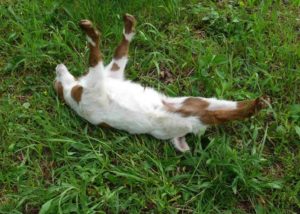
Characteristics of Fainting Goats
1. They are pop-eyed and bug-eyed
Though this may be the general appearance of the eyes, it’s not the eye itself that creates the feature. The structure of the bone surrounding the eye creates the “look”. If you feel the area of the skull around the top of the eye it will feel like a wide semi-rounded oval. It will be wider and broader at the top and narrow as it circles around the eye towards the ear. It will end across from the base of the ear in the back. From the top to the front of the eye the semi-rounded oval will also narrow and end at the front of the eye where it will be barely noticeable. The bottom bone around the eye will be slightly protruding but will be far less noticeable than the top structure.
2. They usually possess three different styles of ear
The first type of ear is medium in length, width and stands outward from the side of the head. Though standing outward many times they will be forward facing. They will have a noticeable ripple in the middle of the ear at which point it may bend slightly downward. The second type of ear is medium in length, width and stands outward from the head, yet may still be forward facing. The main difference in the second type of ear is where they ripple in the middle. A third less common, or less desired by some, ear type is one which shows very little ripple in the middle yet placement and attachment remain the same as the two previous ear types described above.
3. They tend to have a wide muzzle and a medium length nose.
They do not have a dished appearance and are not Roman nosed (like can be seen in the Nubian breed). The side profile of the face is fairly straight with possibly a slight dip present just below the set of the eyes.
4. They have greater bone density and overall muscling compared to other breeds of similar size.
Though it should be in proportion to the animal it will still appear greater than other breeds. A heavy bone density is essential for this breed of goat. It must be able to carry the increased muscle mass that naturally occurs with their myotonia. The bone density is not only greater in their legs but throughout their entire body. The extra muscling of the Myotonic goats is not limited to just their legs. The muscling should be consistent throughout the entire body and heavier in the rear quarters. The muscling tends to increase with age and even does will show a mass of chest muscle along with a well-muscled spine.
5. The fainting goat comes in all colors and seemingly all coat lengths
The color of the coats seen within the breed is almost endless. This is due to their origin and how they have been bred over the past hundred years. Coat lengths vary from short to long. Some have smooth, short coats while others have long coats that drape to the ground. The only coat which is not acceptable is one that hangs from the animal in curly ringlets like seen in the Angora breed. Many animals show a skirting effect around their back and front legs even though the rest of the coat may be short and straight or medium long. This skirt may be short or long depending on the individual.
6. The fainting goats are highly parasite resistant
One study suggests that this breed of goat is one of, if not the best, parasite resistant goat in North America. This does not mean all fainting or myotonic goats are highly parasite resistant as prior breeding and cross breeding is a big part of the equation. The animals which are breed true and have very little cross breeding with other breeds are the ones who seem to hold most true to the statement.
7. The myotonic goat is a very feed efficient browser
This means they are able to sustain and grow on less feed intake than breeds of similar size. This seems to go hand in hand with their slow growth rates. One should not consider a fainter mature until at least the age of three though some don’t fully mature till the age of four.
8. Myotonic goats are, in general, a very calm and docile breed
They carry themselves with dignity and can seemingly capture your heart just by looking at you. They are cautious and actually seem to have the ability to reason a situation before they take action. They are also a quiet breed and not known for being vocal, except when you’re carrying a grain bucket!
9. Fainting goats are easy kidders and excellent mothers
Even a first time mother rarely needs any help or encouragement cleaning or accepting her kids. Their overall presence of mind seems to make them some of the best mothers in the goat world. This breed also seems to have varying heat cycles. Some does are polyestrous (come into heat year round) while some are seasonal. Climate and previous breeding may play a role in this factor. Most often a first time mother can be expected to have one kid. With the second kidding twins are most common but triplets and quads may also appear. Gestation period is the same as other breeds, five months or approximately 145-151 days. Kids are born alert and agile. Within minutes they are up and searching for their first drink of milk. Human intervention is rarely needed with kids born to Myotonic goats. Even at a few hours old kids are very active and conscious of their surroundings.
10. Both horned and polled animals exist
When not disbudded bucks will grow beautiful, thick horns. They will come up slightly from the head then turn outward and off to the side with only a slight rise at the tip. The horns on the does are not as spectacular as they are on the bucks. A doe’s horns are much thinner and will grow upward several more inches before they start to turn slightly to the side.
